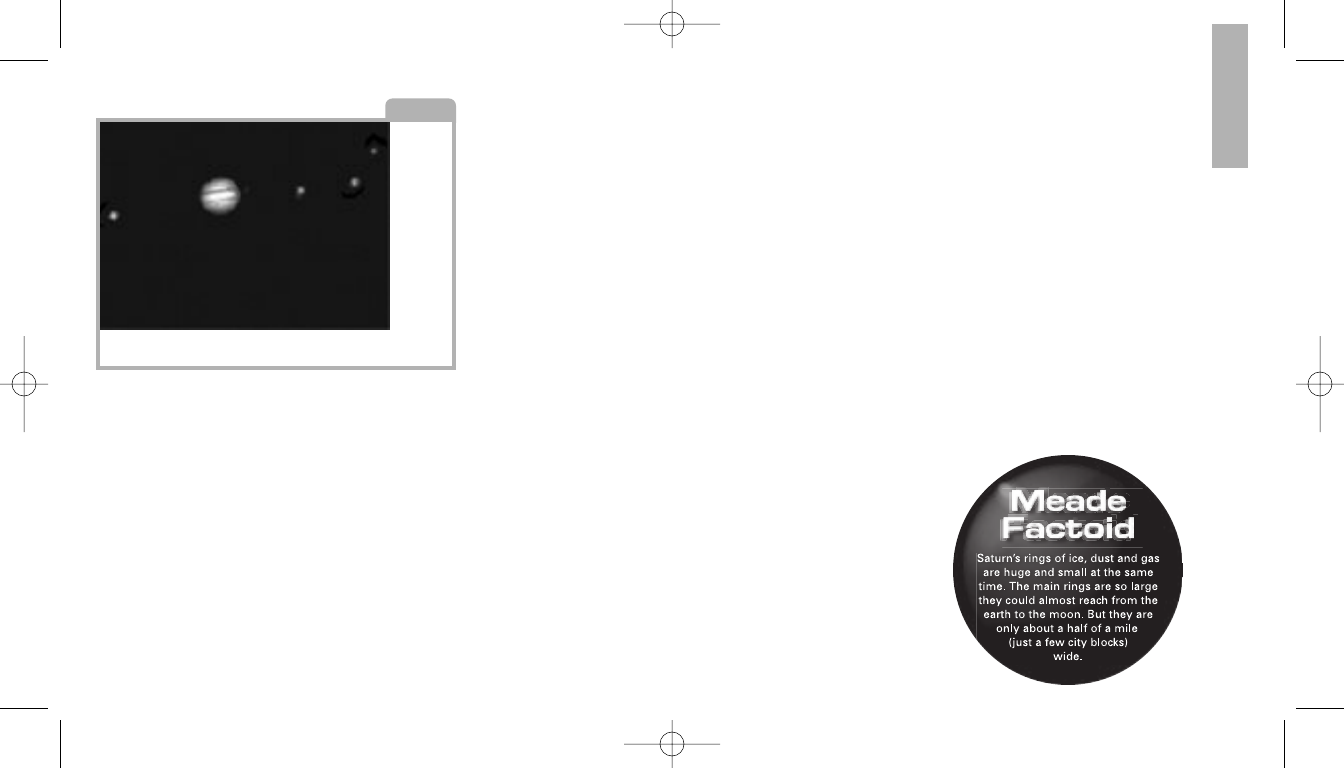
observe Venus going through crescent
phases. But you cannot see any surface
detail on Venus because it has a very thick
atmosphere of gas.
When Mars is close to the Earth, you can see
some details on Mars, and sometimes even
Mars’ polar caps. But quite often, Mars is
further away and just appears as a red dot
with some dark lines crisscrossing it.
Jupiter, Saturn, Uranus, Neptune and Pluto
comprise the outer planets. These planets,
except for Pluto, are made mostly of gases
and are sometimes called gas giants. If they
had grown much bigger, they may have
become stars. Pluto is made mostly of ice.
Jupiter is quite interesting to observe. You
can see bands across the face of Jupiter. The
more time you spend observing these bands,
the more details you will be able to see.
One of the most fascinating sights of Jupiter
are its moons. The four largest moons are
called the Galilean moons, after the
astronomer Galileo, who observed them for
the first time. If you’ve never watched the
Galilean moons in your telescope before,
you’re missing a real treat! Each night, the
moons appear in different positions around
the Jovian sky. This is sometimes called the
Galilean dance. On any given night, you
might be able to see the shadow of a moon
on the face of Jupiter, see one moon eclipse
another or even see a moon emerge from
behind Jupiter’s giant disk. Drawing the
positions of the moons each night is an
excellent exercise for novice astronomers.
Any small telescope can see the four
Galilean moons of Jupiter (Fig. 8), plus a few
others, but how many moons does Jupiter
actually have? No one knows for sure! Nor
are we sure how many Saturn has either. At
last count, Jupiter had over 60 moons, and
held a small lead over Saturn. Most of these
moons are very small and can only be seen
with very large telescopes.
Probably the most memorable sight
you will see in your telescope is
Saturn. Although you may not see
many features on the surface of
Saturn, its ring structure will steal
your breath away. You will probably be able
to see a black opening in the rings, known
as the Cassini band.
Saturn is not the only planet that has rings,
but it is the only set of rings that can be
seen with a small telescope. Jupiter’s rings
cannot be seen from Earth at all—the
Voyager spacecraft discovered the ring after
it passed Jupiter and looked back at it. It
turns out, only with the sunlight shining
through them, can the rings be seen. Uranus
and Neptune also have faint rings.
11
Fig. 8
Meade80EQ-AR 4/28/06 9:55 AM Page 13


















